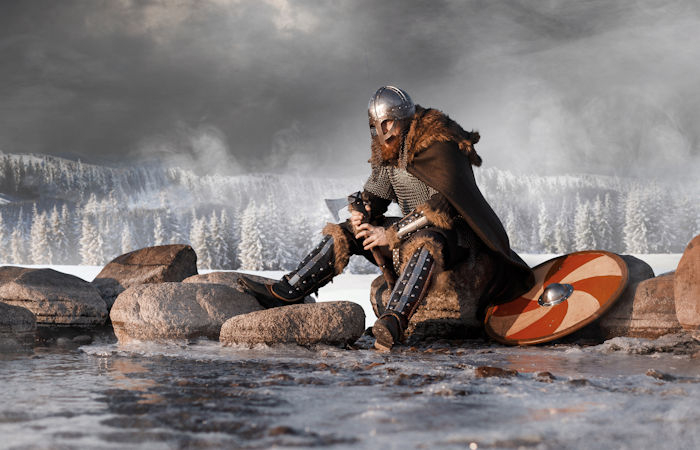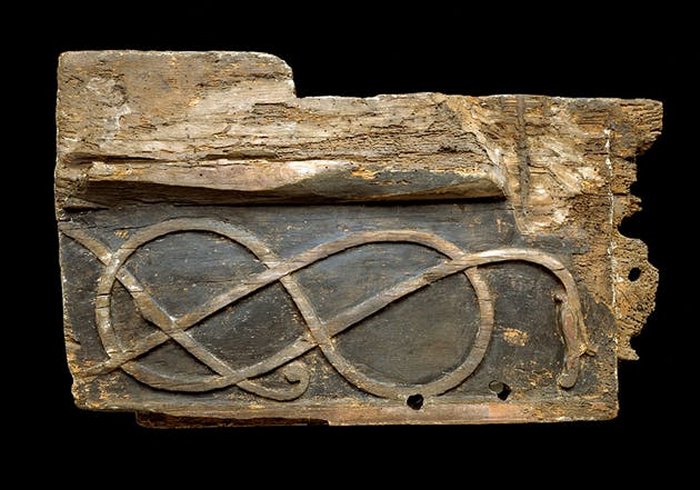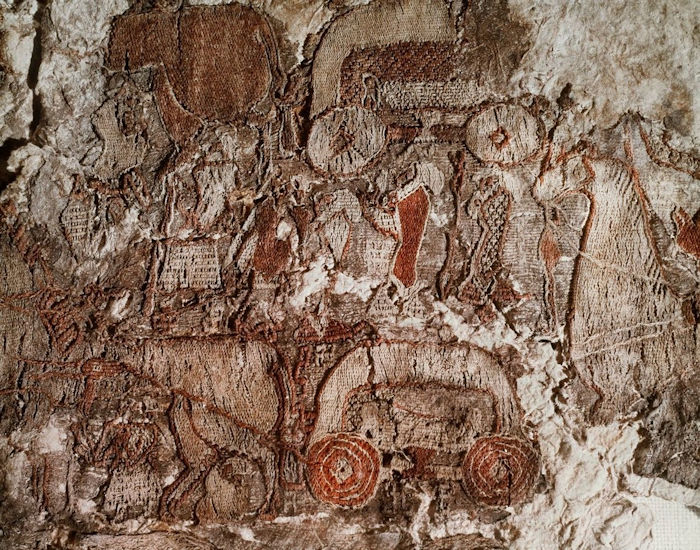The Oseberg Tapestry And Other Artifacts Show Intense Colors Were A Viking Symbol Of Status And Wealth
Ellen Lloyd - AncientPages.com - If you were a Viking warrior, you didn't paint your shield with just any color. Picking the right color was not a matter of taste. It was a decision based on careful selection because the stain revealed a Viking's status and wealth.
Credit: Adobe Stock: Fotokvadrat
Rich Vikings liked showing off using particular colors to symbolize their high societal status. Based on old paint remnants, a Danish chemist and a conservator have managed to recreate a palette of 17 magnificent colors used by the Vikings to emphasize their high status.
Intense colors were popular because they were rare and symbolized status.
Chemist Mads Christian Christensen and conservator Line Bregnhøi from the National Museum in Copenhagen examined a piece of wood from a church built in Hørning in Denmark around 1060. After so many years, the colors were not visible to the naked eye, so chemical analyses were required to recreate them.
Red And Yellow Were A Viking Symbol Of Status And Wealth
The red and yellow shades are derived from minerals not found in Denmark but in Spain and Turkey, among others.
Hørningplankan, a piece of wood examine to discover the importance of Viking colors. Credit: National Museum of Copenhagen
The mineral arsenic sulfide is used to produce yellow colors and can be obtained in countries like Germany and Turkey. The red color is made from cinnabar, which comes from Spain. Researchers think such minerals must have been expensive because they had to be transported to Scandinavia. Colors like red and yellow were only used by rich people who could afford them. The importation of expensive minerals must have been a lucrative business.
Because of the cost, it's unlikely more than minor details were highlighted with these colors.
The seventeen colors from the Viking era. Credit: National Museum Of Copenhagen
Researchers have so far identified 17 colors used by Vikings, and they hope they can discover more shortly. It's an important discovery because it gives us a better understanding of the Viking society.
Scientists have also learned plenty about the importance of colors from artifacts discovered in Oseberg's burial in Norway.
"The magnificent Oseberg ship was used as a burial ship for two Viking women who died in 834. A burial chamber was dug right behind the ship's mast. The walls were decorated with fantastic woven tapestries, and the dead woman lay on a raised bed.
The women had several burial gifts with them. These included clothes, shoes and combs, ship equipment, kitchen equipment, farm equipment, three ornate sleds, five carved animal heads, five beds, and two tents. There were fifteen horses, six dogs, and two small cows. A remarkable collection of wooden and textile artifacts was left behind, and the colors were striking.
The Oseberg tapestry is poorly preserved, but it is clear that it was a long, narrow (20–23 centimeters wide) strip that probably was meant to hang on a wall. It is made from wool dyed in different colors, mainly red, yellow, and black.
A fragment of a tapestry from the Oseberg grave in Vestfold, Norway. Credit: Erik I. Johnsen/Kulturhistorisk museum - CC BY-SA 2.0
The Oseberg tapestry portrays a procession of two rows of horses with knotted tails. Three of the horses pull carts, one containing two people, apparently women. Scholars have speculated whether they represent the two women buried in the Oseberg burial (with a cart among their grave goods) and whether the tapestry was specially made to portray the burial procession. The procession in the tapestry also features a large number of men and women walking.
The women wear long dresses with trains and cloaks, and some carry spears like many men. Their hair appears to be stuffed into bulging headdresses.
In their attire, the women on the Oseberg tapestry are reminiscent of the valkyries welcoming slain warriors to Valhalla, as portrayed on the Gotland picture stones. On these stones, many women do not have their hair hidden by headdresses but have let it down, as Ermengard is reported to have done when Earl Ragnvald visited her in Narbonne.
The valkyries of the picture stones serve food and drink to the dead warriors, and they let their hair down, which may suggest sexual availability. Some women portrayed on picture stones hold drinking horns in their hands, as does a small silver figure of a woman found in Birka; they have been interpreted as valkyries serving drink to dead warriors arriving at Valhalla. The warriors typically arrive by horse. Sometimes, they ride a horse with eight legs, suggesting they are so important that the ruler of Valhalla, Odin, has sent his eight-legged horse, Sleipner, to pick them up. Such picture stones often depict ships." 1
These discoveries and studies are valuable as they give us a better idea of how Vikings decorated their objects and perceived different colors.
Written by - Ellen Lloyd – AncientPages.com
Updated on December 4, 2023
Copyright © AncientPages.com All rights reserved. This material may not be published, broadcast, rewritten or redistributed in whole or part without the express written permission of AncientPages.com
Expand for referencesMore From Ancient Pages
-
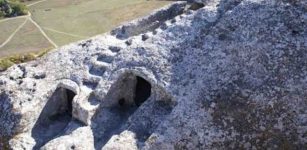 Mangup-Kale: Spectacular Ancient Cave City Hidden In The Crimean Mountains And Home To The Mysterious Kingdom Of Feodoro
Civilizations | Aug 4, 2015
Mangup-Kale: Spectacular Ancient Cave City Hidden In The Crimean Mountains And Home To The Mysterious Kingdom Of Feodoro
Civilizations | Aug 4, 2015 -
 Axum: Mysterious Megalithic Towering Obelisks In Ethiopia
Civilizations | Aug 21, 2018
Axum: Mysterious Megalithic Towering Obelisks In Ethiopia
Civilizations | Aug 21, 2018 -
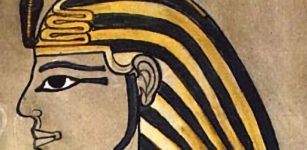 Uraeus – Sacred Emblem That Symbolized Sovereignty, Royalty, Deity And Divine Authority In The Land Of Pharaohs
Featured Stories | May 30, 2022
Uraeus – Sacred Emblem That Symbolized Sovereignty, Royalty, Deity And Divine Authority In The Land Of Pharaohs
Featured Stories | May 30, 2022 -
 Sargon Of Akkad – Prominent Leader Who Rose Out Of Obscurity
Featured Stories | Jun 7, 2019
Sargon Of Akkad – Prominent Leader Who Rose Out Of Obscurity
Featured Stories | Jun 7, 2019 -
 Aristotelian Thought Is Being Revived In Lyceum – Ancient School Founded By The Greek Philosopher
News | Jan 30, 2023
Aristotelian Thought Is Being Revived In Lyceum – Ancient School Founded By The Greek Philosopher
News | Jan 30, 2023 -
 4,000-Year-Old Tomb Of Titi Nab Fu, Pharaoh’s Doctor and ‘Magician’ Unearthed In Saqqara
Archaeology | Jan 8, 2025
4,000-Year-Old Tomb Of Titi Nab Fu, Pharaoh’s Doctor and ‘Magician’ Unearthed In Saqqara
Archaeology | Jan 8, 2025 -
 Native American Legend Of Apotamkin Teaches Children Obedience
Featured Stories | May 14, 2019
Native American Legend Of Apotamkin Teaches Children Obedience
Featured Stories | May 14, 2019 -
 On This Day In History: Battle Of Nineveh Was Fought – On Dec 12, 627 AD
News | Dec 12, 2016
On This Day In History: Battle Of Nineveh Was Fought – On Dec 12, 627 AD
News | Dec 12, 2016 -
 Frightening Hockomock Swamp: Unexplained Vanishings, Encounters With Unknown Creatures, And Ancient Mysteries
Featured Stories | Dec 5, 2024
Frightening Hockomock Swamp: Unexplained Vanishings, Encounters With Unknown Creatures, And Ancient Mysteries
Featured Stories | Dec 5, 2024 -
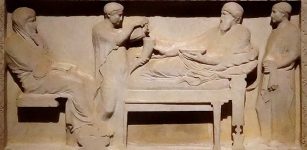 Who Were The Satraps Of The Achaemenid Empire?
Featured Stories | Aug 28, 2021
Who Were The Satraps Of The Achaemenid Empire?
Featured Stories | Aug 28, 2021 -
 Apalala: Harsh Dragon Controlling Swat River Who Became Benevolent Naga King Helping People In Buddhist Tradition
Myths & Legends | Jan 26, 2022
Apalala: Harsh Dragon Controlling Swat River Who Became Benevolent Naga King Helping People In Buddhist Tradition
Myths & Legends | Jan 26, 2022 -
 Remarkable Neolithic Life-Sized Camel Engravings Discovered In The Nefud Desert
Archaeology | Oct 5, 2023
Remarkable Neolithic Life-Sized Camel Engravings Discovered In The Nefud Desert
Archaeology | Oct 5, 2023 -
 Carvings Of Mythological Masks Unearthed In Ancient Theater Of Stratonikeia
Archaeology | Nov 27, 2020
Carvings Of Mythological Masks Unearthed In Ancient Theater Of Stratonikeia
Archaeology | Nov 27, 2020 -
 Underwater Nabataean Temple With Marble Altars Discovered In Pozzuoli
Archaeology | Apr 12, 2023
Underwater Nabataean Temple With Marble Altars Discovered In Pozzuoli
Archaeology | Apr 12, 2023 -
 World Map Of Neanderthal And Denisovan DNA In Modern Humans
DNA | Apr 13, 2023
World Map Of Neanderthal And Denisovan DNA In Modern Humans
DNA | Apr 13, 2023 -
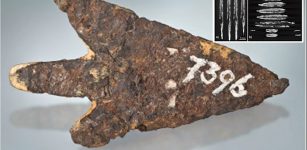 Arrowhead Made Of Meteoritic Iron From The Late Bronze Age Settlement Of Mörigen, Switzerland – Examined
Archaeology | Aug 1, 2023
Arrowhead Made Of Meteoritic Iron From The Late Bronze Age Settlement Of Mörigen, Switzerland – Examined
Archaeology | Aug 1, 2023 -
 On This Day In History: Maltese Rebellion Took Place – On Sep 8, 1775
News | Sep 8, 2016
On This Day In History: Maltese Rebellion Took Place – On Sep 8, 1775
News | Sep 8, 2016 -
 Are The Baffling La Marche Cave Paintings Authentic Or Cunning Forgeries?
Featured Stories | Sep 14, 2020
Are The Baffling La Marche Cave Paintings Authentic Or Cunning Forgeries?
Featured Stories | Sep 14, 2020 -
 Mysterious Ancient European Civilization – Puzzling Ancient Egyptian Connection – Part 2
Ancient Mysteries | Oct 23, 2019
Mysterious Ancient European Civilization – Puzzling Ancient Egyptian Connection – Part 2
Ancient Mysteries | Oct 23, 2019 -
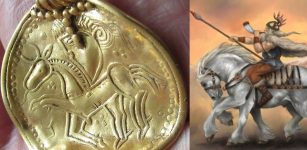 Discovered Gold Pendant Of Odin And His Horse Sleipnir Might Be Linked To The Heruli Tribe
Archaeology | Apr 16, 2016
Discovered Gold Pendant Of Odin And His Horse Sleipnir Might Be Linked To The Heruli Tribe
Archaeology | Apr 16, 2016

